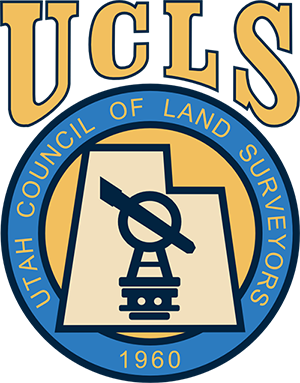Education and CareersThe UCLS works through The Walter M. Cunningham Education Foundation to provide scholarships to deserving surveying students. For more information, click on the following link: Walter M. Cunningham Education Foundation
What is Geomatics? Geomatics is the study of geospatial measurement and the representation of those measurements. Geospatial means that space above, below and on the surface of the earth. So, elements like; roads, bridges, lake beds, underground sewer and water lines, and the land itself all in relationship to each other and geospace. Geomatics, historically known as surveying has grown to encompass not only traditional land surveying but also includes aerial photogrammetry, satellite imagery, 3D laser scanning, and digital mapping or Geographic Information Systems (GIS). What is the difference between Surveying and Engineering? Engineers and particularly civil engineers are closely associated with Surveyors because civil engineers need the geospatial data acquired by surveyors in order to develop and design improvements to land. Civil engineers also need Surveyors because they often need land/property boundaries legally defined and recorded as well as control surveys completed such that the engineered land improvement plans may be properly delineated on the ground. This delineation occurs in the form of boundary monuments/markers, horizontal and vertical control points, and stakes used by contractors to actually construct the infrastructure and buildings defined by the engineered improvement plans. While the Surveyor of the 21st century is involved in a variety of geospatial measurement and data acquisition projects which may or may not relate to civil engineers. Surveying and Geomatics education offered in Utah Currently in the State of Utah there are two programs and three different degrees offered. Salt Lake Community College (SLCC) offers an Associate of Applied Science (AAS) in Geomatics Technology. http://www.slcc.edu/surveying/. Utah Valley University offers an Associate of Science (AS) degree which steps directly into their Bachelor of Science (BS) degree in Geomatics. www.uvu.edu/aed/surveying. What can I do with a degree in Geomatics? A 4- year degree in Geomatics will help prepare you to work as a Surveyor, Cartographer, Photogrammetrists, or GIS professional. Knowledge of Geomatics will give you the foundation and prepare you to create 3D geospatial models of land, structures, infrastructure, and even archeological sites. It will also help you divide land in legally binding boundary plats as well as help you perform topographic, engineering, and forensic type surveys. A 2-year degree will help prepare you to work as a technician in each of these areas. Where could I work? Because Geomatics is an expanded field from just “land surveying” a graduate could work in either the public or private sector. Public Sector: Various City and County governments, State government agencies like; the Department of Natural Resources or Transportation, and Federal agencies like BLM, US Forest Service, NOAA, or even NASA. Private Sector: Various kinds of Utility, Communication, Energy and Geographic companies as well as Engineering and Surveying firms. How much money could I earn? Starting Salary for an individual with little experience and no education is around $30-35,000 and with a BS degree in Geomatics your salary could start around $45,000 per year. After 5 years you could expect to get an average of $63,000 per year here in Utah. As a professional licensed surveyor operating your own business you could even see 6 figures in a good economy.
CONTINUING EDUCATION The UCLS is committed to providing educational opportunities to its members and the greater surveying community. The annual conference is normally held in February. The Fall Forum is typically in September. In addition, the individual chapters offer monthly luncheons or other regular events. These educational seminars help surveyors be aware of the latest technologies, software, and give an opportunity to discuss the techniques and methods of surveying. |
